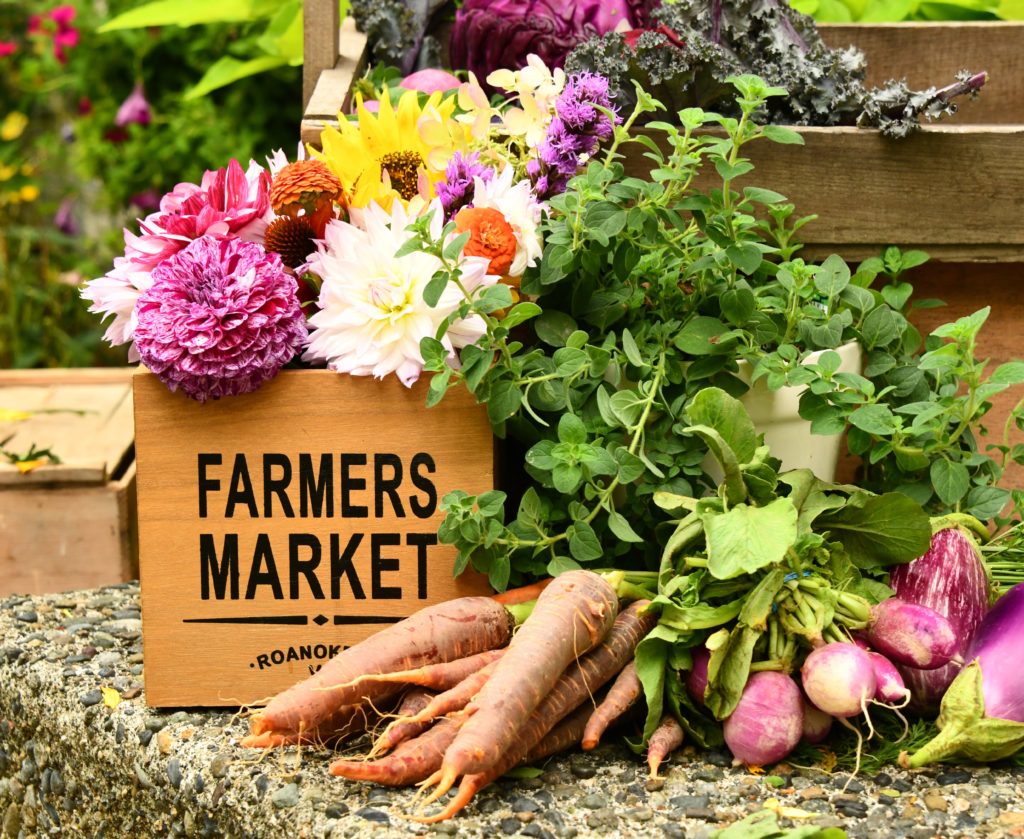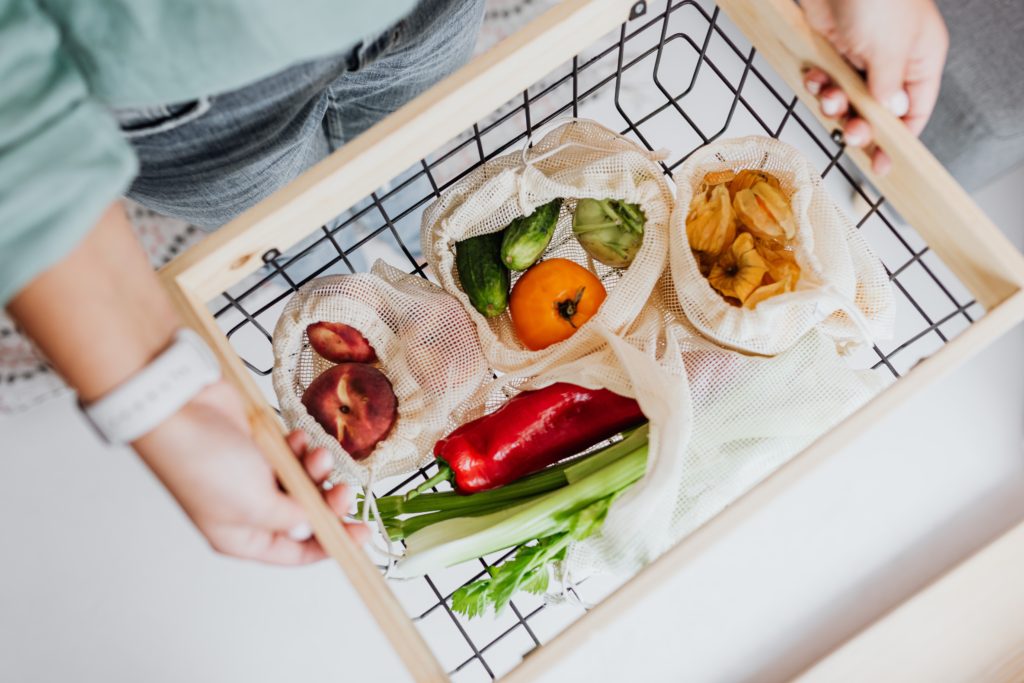Simple tips to improve your health and save the planet

In part 1 and 2 we learned which foods have a more healthful and sustainable impact on us and the environment (hint: plants), the second most important thing you can do is to reduce the amount of food wasted.
Food waste is food that is grown, raised, caught, or harvested, but never eaten.[21] Halving global food waste by 2020 is one item in the UNs Sustainable Development Goals (SDG Target 12.3)[22].When food goes uneaten, that means the land and water used to produce the food were wasted, along with all of the resources needed for its processing, packaging, and transportation.[18] It happens throughout the food supply system, from production to processing to packaging to transportation.[18] About one-third of the food produced on the planet is not consumed.[19] You may be surprised to learn that in many developed countries, up to half of this wasted food happens right in the home.[18,21] Food is the largest category of solid waste in Canadian and US residential waste, making up 22-28 percent of what we throw away.[23,24] This means that each of us can make a difference right in our kitchens.
Every country and continent actually has more calories available than human beings need, says Preston. The real problem is where those calories are going, like “to corn, meat and highly-processed food that don’t make people healthy.” Malnutrition is caused by inadequate distribution of food, not lack of it.
https://www6.royalbank.com/en/di/hubs/tech-and-culture/article/rethinking-how-canada-grows-buys-eats-food/kwe96fy0
When you throw food away in the garbage you’re wasting all of the water, land, and energy that went into producing, processing, and transporting that food. When the food ends up in landfills it can produce the gas methane, which is a greenhouse gas that is 25 times more powerful than the commonly known greenhouse gas, carbon dioxide.[18,21] Some people choose to compost their food waste, which isn’t as bad as the landfill because it turns the nutrients into a rich soil to nourish future crops. But, the best option is to reduce the amount of waste produced in the first place whenever possible. Food waste happens at home for a few different reasons. First of all, if you purchase impulsively without a plan, you might buy too much food that isn’t needed. Secondly, food you don’t store properly can go bad before it’s eaten. Thirdly, sometimes you prepare too much food, and leftovers stick around too long and go bad before they’re eaten. Let’s look at some “pro tips” to address each of these areas.

Amount of food – Shopping wisely
When you purchase too much food in the first place, that can lead to waste. Here’s how to reduce your environmental impact when you purchase food:
- Save time and money by starting your shopping with a meal plan or grocery list. This allows you to avoid impulse buying and buy what you need without forgetting anything (which also helps to cut down on the number of trips you need to make, saving you time, transportation costs, and fossil fuel burning).
- Check your fridge and cupboards before grocery shopping so you don’t buy something you already have. Or try this cool kitchen app, KitchenPal http://kitchenpalapp.com/en/ to help you keep track of what you have and when it’s going to reach its “expiry” date.
- Before you head to the grocery store or market, have a meal or snack to avoid buying extra foods simply because you’re hungry. This one gets me all the time!
- Buy “imperfect” or “ugly” fruits and vegetables and other food that is approaching its “best before” or “sell by” date. Be sure to use the food fairly soon or freeze it.
- Consider frozen foods when possible because at least one study showed that it can reduce the amount of fresh food waste by up to 47%[25].
Beyond wasting the food itself, there’s also waste from disposable grocery bags and food packaging. You can reuse your grocery bags, look for foods that have less packaging, or shop at stores where you can bring your own clean, refillable containers.

Sustainable restaurant meals
Grocery stores aren’t the only place you get food. Here are some tips for a more sustainable experience when eating out:
- Support your more sustainable restaurants or choose plant-based options wherever possible.
- Check if there’s an app for your area that shares end-of-the day restaurant meals (possibly at a discount) that would otherwise go to waste.
- If ordering takeout food, ask them to exclude disposable utensils and packets.
- If eating at a restaurant where the portion size is too big for one person, split a meal with a friend or bring a clean reusable container to bring extra food home with you.
Food storage – Keeping food fresh as long as possible
Fruits and vegetables are the most commonly wasted foods in our homes.[21] Food lasts longest when you store it the right way:
- “Climacteric” fruit continues to ripen after harvesting, so be sure to refrigerate them once they’ve reached desired ripeness (e.g., apples, avocados, freeze bananas and add to smoothies or desserts , cantaloupe, kiwi, mangoes, nectarines, peaches, pears, plums, and tomatoes)[26].
- Keep packaged food in its original packaging to extend freshness.
- You can wash, chop, and dry unpackaged food you’re going to eat in the next few days and place it in clear containers in your fridge or freezer.
- Don’t wash berries until you’re ready to enjoy them.
- Put perishable food at the front of your fridge so you can see it easier and use it up first.
- Reuse clean food storage containers and water bottles/travel mugs.
- If something might go bad soon, put it in the freezer so you can eat it later.
- When storing or freezing foods, put a date on the container to remind you when you stored or froze them.
How long will food stay fresh?
There are a lot of food dates that really seem like “expiry dates” and no one wants to get sick from eating spoiled food even if it doesn’t look or smell “off.” A recent study in the U.S. published in Waste Management found that food dates are often misunderstood and are strongly associated with more frequent discarding of foods[27]. Let’s have a quick refresher (according to the Canadian Food Inspection Agency):
- “Best Before” or “Use by” – Unopened food product, when stored properly will remain fresh, taste the way it’s meant to, have the nutrition as shown on the label, and retain any other qualities that are on the label[28].
- “Packaged on” – The “packaged on” date along with the “durable life information” (which should be on the food label or a poster next to the food) tells you how long an unopened food product will retain its quality and freshness[28].
- “Expiration date” – These are found mostly on infant formulas, meal replacements, and nutritional supplements. These dates mean that after the expiration date, the product may not have the same nutrient content that’s on the label. Foods and supplements past the expiration date should not be bought, sold, or consumed. They should be discarded.
There are other dates you may see, such as “sell by,” “prepared on,” “freeze by,” or “manufactured on.” These are voluntarily used by food manufacturers to be helpful for consumers, but have no specified definition [according to Canada’s Food and Drug Regulations][28].

When cooking or preparing food
- Use the ripest or most perishable foods (particularly fresh greens or berries) first.
- Try new recipes to use up food you already have.
- When foods start to become overripe or bruised use them in a smoothie, soup, stir fry, casserole, or sauce, or freeze them right away.
- Use vegetable scraps (e.g., carrot or celery tops, beet greens, broccoli stalks, herb stems, or meat bones) to make a broth (if you don’t have enough just yet, freeze what you have until you have enough).
- When you make too much food, be sure to share it, store it, and/or enjoy it again before it goes bad.
Remember, the goal isn’t to overeat to reduce waste but rather to try not to buy or make too much in the first place.
When some of the food you have is still good but you can’t finish it, the best thing you can do is share your extras. Made too much? Bring a serving or two to a neighbour, friend, or family member, or even store it (consider freezing) to enjoy another day. Bought too much and it’s still in the unopened package? Donate it to a community refrigerator or food bank.
Disposing of food – When it’s bad, it just needs to go
Despite our best efforts at all of the above, some food will still inevitably go bad (hopefully, it’s a lot less than before, though!). When food truly does pass the “expiry date” or go bad, it needs to be disposed of to save you from potential food poisoning. The best way to dispose of food waste is to compost your fruit and vegetable scraps in your garden or find out if your community or region has a composting program (that may take more than just fruit and veggie scraps).
Summary of reducing food waste
There are so many ways to reduce food waste to help the environment and your pocketbook, from how much you buy to keeping food fresh to knowing your “dates” to choosing which foods to eat first. Using even some of these tips will help you eat more sustainably.
11 – References
1 – Cheng, J., Xu, Z., Bambrick, H., Prescott, V., Wang, N., Zhang, Y., Su, H., Tong, S., & Hu, W. (2019). Cardiorespiratory effects of heatwaves: A systematic review and meta-analysis of global epidemiological evidence. Environmental research, 177, 108610. https://doi.org/10.1016/j.envres.2019.108610
2 – Preston, E. V., Eberle, C., Brown, F. M., & James-Todd, T. (2020). Climate factors and gestational diabetes mellitus risk – a systematic review. Environmental health : a global access science source, 19(1), 112. https://doi.org/10.1186/s12940-020-00668-w
3 – Liu, J., Varghese, B. M., Hansen, A., Xiang, J., Zhang, Y., Dear, K., Gourley, M., Driscoll, T., Morgan, G., Capon, A., & Bi, P. (2021). Is there an association between hot weather and poor mental health outcomes? A systematic review and meta-analysis. Environment international, 153, 106533. Advance online publication. https://doi.org/10.1016/j.envint.2021.106533
4 – Baylis M. (2017). Potential impact of climate change on emerging vector-borne and other infections in the UK. Environmental health : a global access science source, 16(Suppl 1), 112. https://doi.org/10.1186/s12940-017-0326-1
5 – Asadgol, Z., Badirzadeh, A., Niazi, S., Mokhayeri, Y., Kermani, M., Mohammadi, H., & Gholami, M. (2020). How climate change can affect cholera incidence and prevalence? A systematic review. Environmental science and pollution research international, 27(28), 34906–34926. https://doi.org/10.1007/s11356-020-09992-7
6 – Wu, X., Liu, J., Li, C., & Yin, J. (2020). Impact of climate change on dysentery: Scientific evidences, uncertainty, modeling and projections. The Science of the total environment, 714, 136702. https://doi.org/10.1016/j.scitotenv.2020.136702
7 – Tidman, R., Abela-Ridder, B., & de Castañeda, R. R. (2021). The impact of climate change on neglected tropical diseases: a systematic review. Transactions of the Royal Society of Tropical Medicine and Hygiene, 115(2), 147–168. https://doi.org/10.1093/trstmh/traa192
8 – Ahmed, T., Hyder, M. Z., Liaqat, I., & Scholz, M. (2019). Climatic Conditions: Conventional and Nanotechnology-Based Methods for the Control of Mosquito Vectors Causing Human Health Issues. International journal of environmental research and public health, 16(17), 3165. https://doi.org/10.3390/ijerph16173165
9 – Grinspoon, P. (2019, March 26). Cleaner living: Plant-friendly is planet-friendly. Harvard Health. https://www.health.harvard.edu/blog/cleaner-living-plant-friendly-is-planet-friendly-2019032516269
10 – Aleksandrowicz, L., Green, R., Joy, E. J., Smith, P., & Haines, A. (2016). The Impacts of Dietary Change on Greenhouse Gas Emissions, Land Use, Water Use, and Health: A Systematic Review. PloS one, 11(11), e0165797. https://doi.org/10.1371/journal.pone.0165797
11 – Ritchie, H. (2020, January 24). You want to reduce the carbon footprint of your food? Focus on what you eat, not whether your food is local. Our World in Data. https://ourworldindata.org/food-choice-vs-eating-local
12 – Svoboda, E. (2021, April 28). Can gratitude help you live more sustainably? Greater Good Magazine.
13 – Kates, S., & DeSteno, D. (2020). Gratitude reduces consumption of depleting resources. Emotion (Washington, D.C.), 10.1037/emo0000936. Advance online publication. https://doi.org/10.1037/emo0000936
14 – Lowrey, A. (2021, April 6). Your Diet Is Cooking the Planet: But two simple changes can help. The Atlantic. https://www.theatlantic.com/health/archive/2021/04/rules-eating-fight-climate-change/618515/
15 – Tello, M. (2018, November 29). Eat more plants, fewer animals. Harvard Heath. https://www.health.harvard.edu/blog/eat-more-plants-fewer-animals-2018112915198
16 – Micha, R., Peñalvo, J. L., Cudhea, F., Imamura, F., Rehm, C. D., & Mozaffarian, D. (2017). Association Between Dietary Factors and Mortality From Heart Disease, Stroke, and Type 2 Diabetes in the United States. Journal of the American Medical Association, 317(9), 912–924. https://doi.org/10.1001/jama.2017.0947
17 – Health Canada. (2021, April 9). Canada’s Food Guide. https://food-guide.canada.ca/en/
18 – Health Canada. (2020, October 14). Healthy Eating and the Environment.
19 – International Panel on Climate Change.(2018). Special Report: Global warming of 1.5 ºC. https://www.ipcc.ch/sr15/chapter/chapter-4/
20 – Schwarcz, J. (2017, March 20). The Environmental Cost of Meat. McGill Office for Science and Society. https://www.mcgill.ca/oss/article/science-science-everywhere/environmental-cost-meat
21 – Environment and Natural Resources Canada. (2019, June 28). Taking stock: Reducing food loss and waste in Canada. https://www.canada.ca/en/environment-climate-change/services/managing-reducing-waste/food-loss-waste/taking-stock.html
22 – Food and Agricultural Organization of the United Nations. (2019). The state of food and agriculture. http://www.fao.org/3/ca6030en/ca6030en.pdf
23 – Environment and Climate Change Canada. (2020). National waste characterization report: The composition of Canadian municipal residual solid waste. http://publications.gc.ca/collections/collection_2020/eccc/en14/En14-405-2020-eng.pdf
24 – Recycle Track Systems. (2021). Food Waste in America in 2021. https://www.rts.com/resources/guides/food-waste-america/
25 – Martindale W. (2017). The potential of food preservation to reduce food waste. The Proceedings of the Nutrition Society, 76(1), 28–33. https://doi.org/10.1017/S0029665116000604 https://www.cambridge.org/core/journals/proceedings-of-the-nutrition-society/article/potential-of-food-preservation-to-reduce-food-waste/068BA186512F7A373F099C7C61CC3E90
26 – Harvard T. H. Chan School of Public Health. (n.d.) Tackling food waste at home. https://www.hsph.harvard.edu/nutritionsource/sustainability/food-waste/food-waste-home/
27 – Neff, R. A., Spiker, M., Rice, C., Schklair, A., Greenberg, S., & Leib, E. B. (2019). Misunderstood food date labels and reported food discards: A survey of U.S. consumer attitudes and behaviors. Waste management (New York, N.Y.), 86, 123–132. https://doi.org/10.1016/j.wasman.2019.01.023
28 – Canadian Food Inspection Agency. (2019, December 12). Date labelling on pre-packaged foods. https://inspection.canada.ca/food-label-requirements/labelling/consumers/date-labelling/eng/1332357469487/1332357545633

